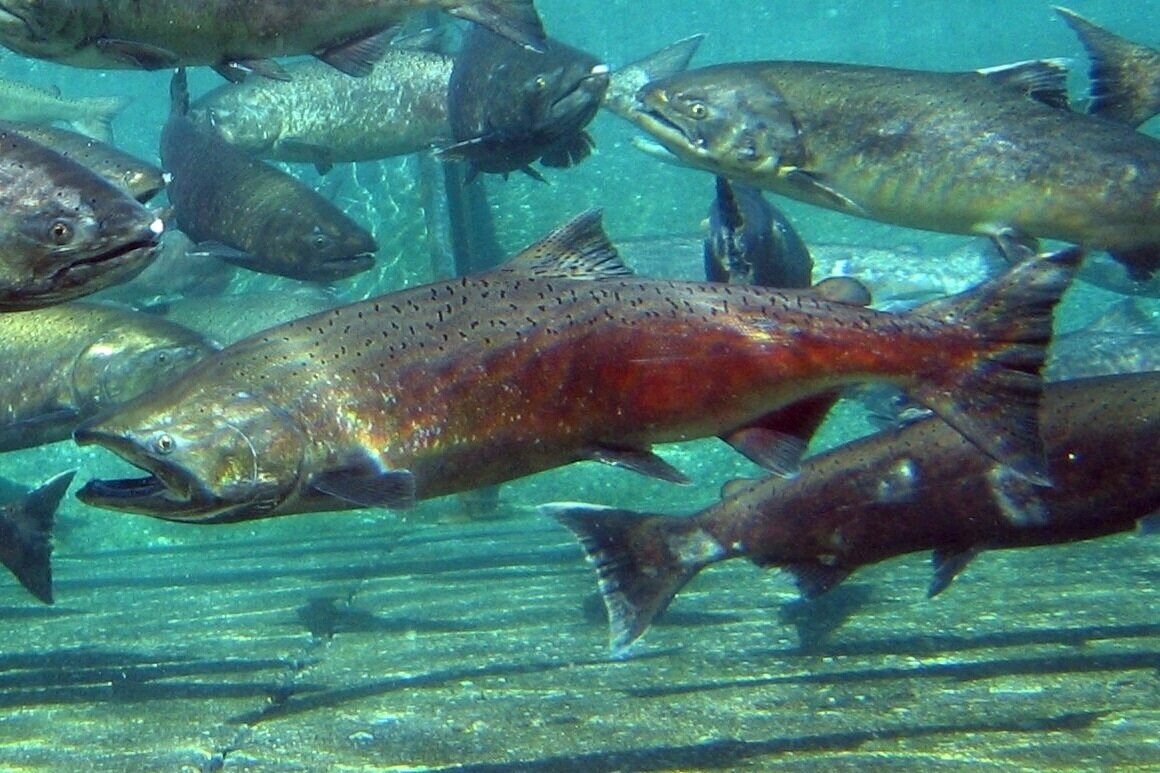Chinook Salmon Facts
Photo by mypubliclands (Creative Commons Flickr).
Chinook salmon (Oncorhynchus tshawytscha) play a vital role in the Pacific Northwest’s ecological food web. Juvenile Chinook salmon feed primarily on terrestrial and aquatic insects, crustaceans, crab larvae, and amphipods, while mature Chinook salmon feed on forage fish such as smelt, Pacific sand lance, Pacific herring, and pricklebacks. Chinook salmon are important prey for seabirds, grizzly bears, harbor seals, Steller sea lions, and Southern Resident killer whales. Chinook are found throughout the Northern Pacific Ocean, but currently, many of the wild populations of these salmon are endangered. Their decline has been caused by habitat loss, development, migration barriers, overfishing, overuse of water resources, loss of genetic diversity, salmon farms, and climate change.
DID YOU KNOW?
The endangered Southern Resident killer whales rely on Chinook salmon as their main source of prey. From 1975 to 2015, the amount of Chinook salmon consumed by killer whales and pinnipeds increased drastically from 6,100 to 15,200 tons, which is equivalent to an increase of 5 to 31.5 million individual salmon.
For more than 100 years, hatchery programs have been used to augment wild salmon populations. Hatchery managers are trying to improve this tool while minimizing impact on wild Chinook.
Chinook salmon possess a natural genetic color polymorphism, which gives their tissue and eggs a red or white coloration.

